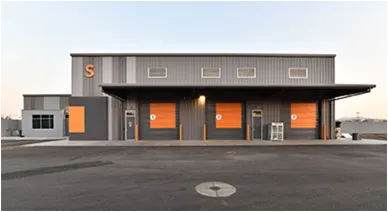- Afrikaans
- Albanian
- Amharic
- Arabic
- Armenian
- Azerbaijani
- Basque
- Belarusian
- Bengali
- Bosnian
- Bulgarian
- Catalan
- Cebuano
- Corsican
- Croatian
- Czech
- Danish
- Dutch
- English
- Esperanto
- Estonian
- Finnish
- French
- Frisian
- Galician
- Georgian
- German
- Greek
- Gujarati
- Haitian Creole
- hausa
- hawaiian
- Hebrew
- Hindi
- Miao
- Hungarian
- Icelandic
- igbo
- Indonesian
- irish
- Italian
- Japanese
- Javanese
- Kannada
- kazakh
- Khmer
- Rwandese
- Korean
- Kurdish
- Kyrgyz
- Lao
- Latin
- Latvian
- Lithuanian
- Luxembourgish
- Macedonian
- Malgashi
- Malay
- Malayalam
- Maltese
- Maori
- Marathi
- Mongolian
- Myanmar
- Nepali
- Norwegian
- Norwegian
- Occitan
- Pashto
- Persian
- Polish
- Portuguese
- Punjabi
- Romanian
- Russian
- Samoan
- Scottish Gaelic
- Serbian
- Sesotho
- Shona
- Sindhi
- Sinhala
- Slovak
- Slovenian
- Somali
- Spanish
- Sundanese
- Swahili
- Swedish
- Tagalog
- Tajik
- Tamil
- Tatar
- Telugu
- Thai
- Turkish
- Turkmen
- Ukrainian
- Urdu
- Uighur
- Uzbek
- Vietnamese
- Welsh
- Bantu
- Yiddish
- Yoruba
- Zulu
Dec . 04, 2024 09:41 Back to list
Building Steel Design An Overview
Building steel design plays a crucial role in modern architecture and construction, shaping the skyline of cities around the world. Steel, known for its high strength-to-weight ratio, durability, and versatility, has become the material of choice for a wide range of structures. This article explores the essentials of building steel design, including its advantages, fundamental principles, and contemporary applications.
Advantages of Steel in Construction
One of the primary advantages of using steel in construction is its immense strength. Steel can withstand heavy loads, making it ideal for tall buildings and large-span structures such as bridges and stadiums. Its high tensile strength allows for the creation of open spaces without the need for excessive internal support, fostering innovative architectural designs.
Moreover, steel is a sustainable choice. A significant percentage of the steel used in construction today is recycled, reducing the environmental impact of sourcing new materials. Steel structures can be designed for disassembly, allowing components to be reused or repurposed at the end of a building's life cycle, further promoting sustainability in construction practices.
Principles of Steel Design
The design of steel structures is governed by several fundamental principles. Understanding these principles is essential for ensuring safety, functionality, and aesthetic appeal. Here are key considerations in building steel design
1. Load-Bearing Capacity Steel structures must be designed to support various loads, including dead loads (the weight of the structure itself), live loads (occupants, furniture, and equipment), and environmental loads (wind, snow, and seismic activity). Engineers utilize advanced calculations and modeling to determine the appropriate size and configuration of steel members.
building steel design

2. Connection Design Connections are critical in steel design, as they transfer loads between different structural elements. Common connection types include welded, bolted, and riveted joints. The choice of connection influences the overall stability and integrity of the structure, necessitating precise calculations and adherence to relevant codes and standards.
3. Stability and Stability Analysis A successful design must address lateral stability, particularly for tall buildings susceptible to wind and seismic forces. Engineers must conduct thorough stability analysis, using methods such as bracing systems or shear walls to ensure that the structure can withstand these forces without collapsing.
4. Aesthetic Considerations While functional aspects are paramount, aesthetic considerations also play a vital role in building steel design. Architects work closely with structural engineers to create visually appealing structures that complement their environment. The use of exposed steel elements, creative shapes, and innovative configurations can significantly enhance the building's appearance.
Contemporary Applications of Steel Design
Today, steel is utilized in a variety of construction projects, ranging from residential buildings to skyscrapers and bridges. The ongoing advancements in steel manufacturing and design technologies have opened up new possibilities for architects and engineers. For example, the introduction of high-strength steel has enabled the construction of taller and more efficient buildings.
Additionally, modular steel construction is gaining popularity, where prefabricated steel components are manufactured off-site and assembled on location. This method reduces construction time and minimizes waste, contributing to cost-effective and sustainable building practices.
Conclusion
Building steel design represents a fusion of engineering principles, architectural creativity, and sustainability. The unique properties of steel offer infinite possibilities for creating safe, resilient, and aesthetically pleasing structures. As technology continues to evolve, the field of steel design will likely advance further, leading to innovative solutions that address the challenges of modern construction. Architects and engineers must work collaboratively to harness the full potential of steel, ensuring that our buildings stand the test of time while meeting the demands of a rapidly changing world. Through thoughtful design and rigorous analysis, the future of building steel design promises to be bright, shaping the landscapes of cities for generations to come.
-
How Do Prefabricated Steel Structures Transform Modern Construction?
NewsJul.14,2025
-
How Do Prefabricated Metal Buildings Redefine Modern Construction?
NewsJul.14,2025
-
How Do Prefab Insulated Metal Buildings and Steel Structures Revolutionize Modern Construction?
NewsJul.14,2025
-
How Do Pre - Engineered Steel Structures Redefine Modern Construction?
NewsJul.14,2025
-
Advancing Modular Construction with Prefabricated Metal Structures
NewsJul.14,2025
-
Advancing Industrial Infrastructure with Prefabricated Steel Solutions
NewsJul.14,2025
Products categories
Our Latest News
We have a professional design team and an excellent production and construction team.












